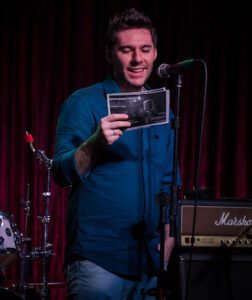What makes one voice different from another? Will I ever have the voice of my favorite singer?
We can divide the answer to these questions into 2 parts:
1) Factors that are in your control and
2) Factors that are not in your control.
1) Regarding the factors that are under your control, we can mention things very similar to what we have dealt with in most of our posts so far: studies and musical experiences and care for your vocal health.
Everything you studied and did in relation to music matters here. The main factor in the case of this post is the study of vocal technique.
For the work and strengthening of the vocal registers (simplified – chest voice, mixed voice, head voice and falsetto – more information on our blog ), for the very choice of these same registers and mixtures when performing a song, for the control of your larynx, for the level of nasalization you are able to put or take away from your voice, the position of your tongue when singing – among other factors – you can significantly alter the timbre of your voice.
Timbre, by the way, is an important concept for this subject. Here are some definitions from the Aulete dictionary:
- Brand, insignia or sign printed on stationery or stamped in books as an indication of ownership.
[…]
- Acús.Quality that distinguishes a sound, regardless of its pitch or intensity.
[…]
- Acoustic quality of the human voice, which distinguishes one person’s voice from another’s.
- Mús.Individual characteristic of a sound, due to the combination of its harmonic sounds.
[…]
See how some things are interesting. The word is related to something that indicates to be your property. That in the voice is extremely important because two different people will never have exactly the same timbres, they can be similar, but never the same. The timbre of a person’s voice is like a fingerprint.
Another interesting thing is that timbre is a characteristic of sound that is independent of pitch or loudness. For example, a piano and a violin (or two different voices) can be playing or singing exactly the same notes at the same intensities and still have different characteristics (timbres).
In a very reduced way, we could say that the timbre is the “color” of your voice, all its characteristics, all the adjectives that we can give it. Just as a guitarist adapts his equipment to the repertoire he is going to play, a singer must find the best vocal posture for a given style or song.
Another aspect that can alter your voice quality is the care you must take with your vocals. For more information, read this post .
2) The main factor that is not in your control is, without a doubt, your vocal physiology.
Again, simply put, our vocal folds work a bit like a guitar: without plugging in the amplifier, the sound is almost non-existent. Our “amplifier” is the resonant cavities of the body (chest, mouth, nose, head, etc.).
But then you might ask: everyone has a chest, mouth, nose, head etc… why do voices sound different?
First we need to take a step back to explain some acoustics concepts.
No musical note (or frequency) occurs in isolation in nature. The closest we have to a musical note happening in isolation is when we program a computer to play a sine wave at a specific frequency. This sound is a bit like a landline phone on the line.
All other sounds that we hear in nature, sounds of instruments or voices, happen by an overlapping of a fundamental frequency and several “parasitic” frequencies at different intensities.
These “parasitic” frequencies are what we call harmonics. The harmonic series of a sound is made up of fixed proportional intervals (which are usually rounded for ease of understanding). It is important to note that there is not a single harmonic series, but a different series for each fundamental frequency.
And the noises?
Well, there are different kinds of noises. Some are more tonal (in which a dominant frequency is perceived) and others less tonal. But the common feature of all noise is that there is a very large amplitude (intensity) of several frequencies happening simultaneously.
Below the first components of the harmonic series starting from C 1 (about 65.41hz):

Why is it important?
Because the construction of each musical instrument (through different formats and materials) has a different balance of these harmonics from each fundamental note emitted by the musician. And that makes each instrument have a distinct sound from the other.
And in the voice how does it work?
As each vocal tract (set of structures that allow us to articulate and filter the sounds of our speech or singing – such as lips, pharynx, larynx, oral cavity, nasal cavity, etc.) has a different shape and size, each voice in terms of timbre is unique too.
Does that mean I’ll never be able to have the same voice as my favorite song?
Unfortunately not, unless medicine evolves a lot in the sense of doing radical plastic surgeries in the vocal tract or else by some form of genetic experiment.
BUT IT REALLY DOESN’T MATTER!
Replace that goal of having a voice like so-and-so with the goals of singing as well as so-and-so or singing using the same resources as your favorite singer.
Learn to appreciate different voices (just like we can appreciate different foods), ensure accurate intonation and rhythm, understand how vocal technique can shape your timbre, learn to choose a repertoire that fits your voice well (or compose for your voice) , work with good producers who will make arrangements and choose keys that emphasize your strengths as a singer.
Anyway… there is a world of possibilities for you to be a great singer and for you to get rid of some nonsense you may have heard out there!

